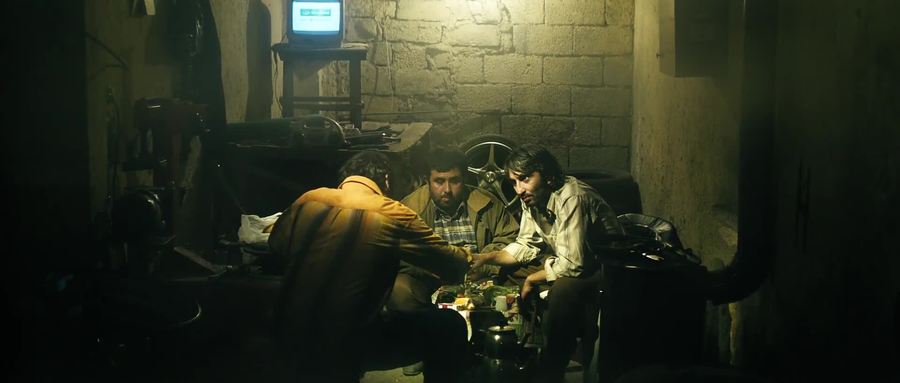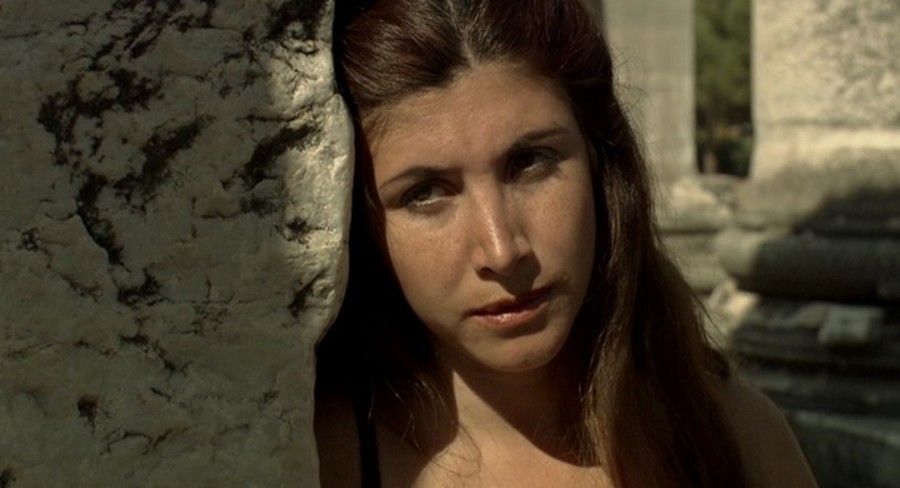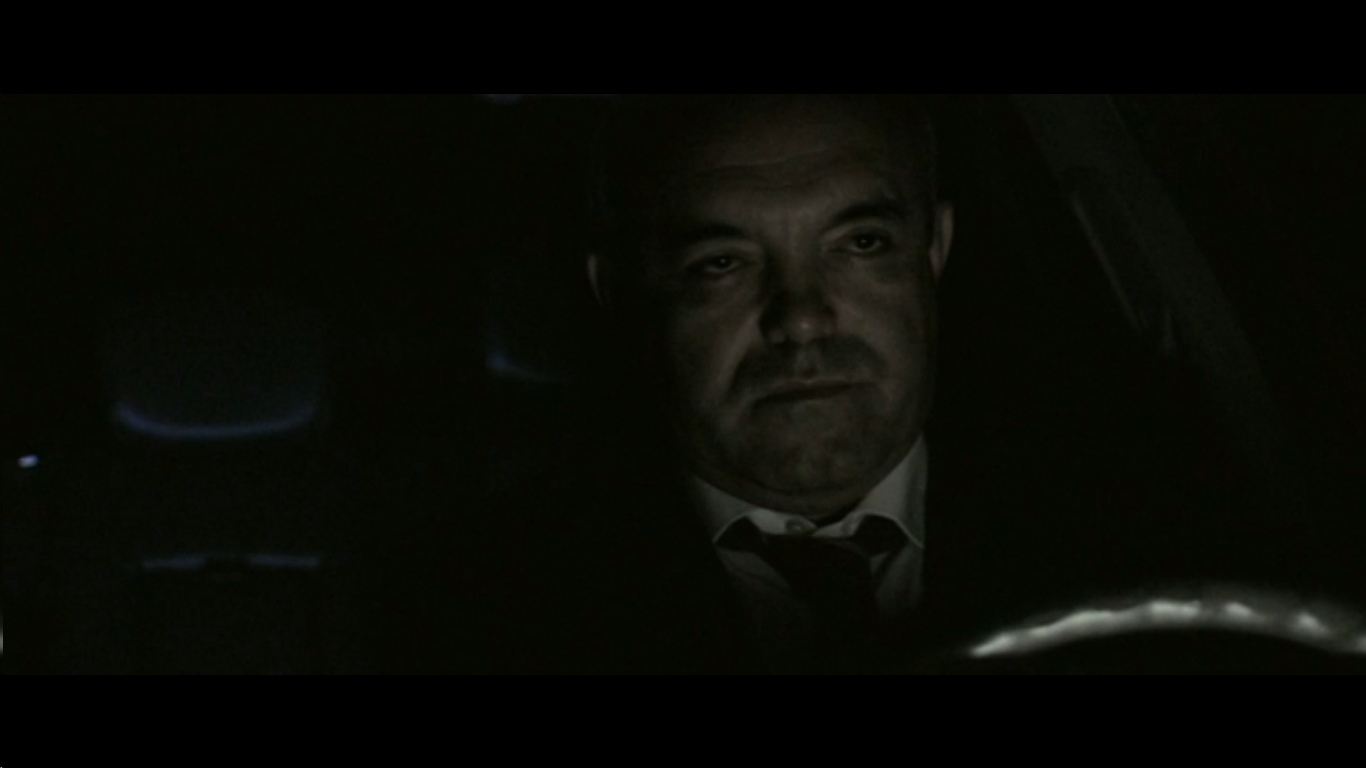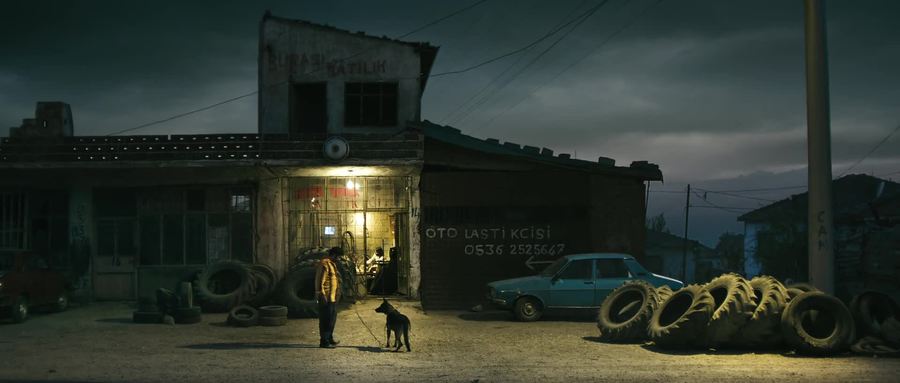Nuri Bilge Ceylan doesn’t need any introduction these days, but if he did, we could do worse than looking at the opening scenes of his films—because goodness, this is a director who knows how to set a scene and tell a story. If Winter Sleep’s Palme d’Or win at the Cannes Film Festival in May 2014 affirmed Ceylan as a quantifiable master taking the storytelling craft of narrative cinema to its present limits, the film’s current theatrical run gives us occasion to look back at three of the six features the Turkish auteur made immediately before it—all of which are viewable here.
Writing elsewhere on Winter Sleep, I have noted that it’s been genuinely exciting to observe Ceylan’s evolution as a filmmaker and an artist, from the more intimate canvases of Small Town (1998) and Clouds of May (1999) to the more outward sprawl of Once Upon a Time in Anatolia (2011)—by way of engaged, probing dramas like Uzak (2002), Climates (2006) and Three Monkeys (2007). I don’t think any of these films have yet been flawless, but the excitement for me comes from the strong feeling, when watching them, that you’re in the hands of someone pushing himself and his collaborators in order to get at something resembling the truth of things. There’s a sensitivity, a curiosity, a clear time and energy for the ordinary person: family members and villagers in Small Town and Clouds of May, the listless cousin in Uzak, a long-suffering wife in Climates, and, after this, the class tensions that simmer throughout Three Monkeys and Once Upon a Time in Anatolia.
The two throbbing sensibilities in Ceylan—let’s say the inward reflexivity of earlier works and the more investigative panorama of later works—meld in Winter Sleep. Some might say the merge isn’t quite successful. Again, I don’t think the film is without its flaws—though the way in which its ostensibly narrow focus gives way to a powerful, complex drama riddled with social and interpersonal frissons is as enthralling as that ought to sound, and excitingly recalls the UK’s most gifted working filmmaker, Joanna Hogg (Unrelated, Archipelago, Exhibition).
Indeed, as I have claimed, also elsewhere, Ceylan might be our century’s great auteur, forging ahead with his own thing while also befitting comparisons to the arthouse powerhouses of yore. More than any other filmmaker today, he seems closer to taking the medium to another level—to something that is literary as well as cinematic, that is poetic as well as theatrical, to something that isn’t merely concerned with being “pure cinema” or other some pseudo-radical medium by which to conduct aphoristic half-thoughts to the enlightened few who get it. No, Ceylan’s films are commercial in the best possible sense, and at no point in his developing oeuvre have I felt he’s settled into a status quo. That’s an achievement.
All of which is to say that what I’ve written so far here and what I’m about to write below is prone to hyperbole, unfounded claims and there-you-have-it assertions precisely because I don’t feel an article of this length or nature can do justice to a master like Ceylan. Indeed, because of their pictorial and thematic depth, Ceylan’s films demand scrutiny: close readings, textual analyses, re-watches, re-watches and re-watches, because his cinema is an actor’s cinema as much as it is an auteur’s. We might even say it’s a gestural cinema—not in the way that, say, Terrence Malick’s cinema has become gestural, but in the way it gives time and space to something like a quiet, fire-lit epiphany on a cold wintry eve. As Roger Ebert said of Anatolia: “It needs to be long, and it needs to be indirect, because the film is about how sad truths can be revealed during the slow process of doing a job.”
Gestures. It all starts with a woman. The opening shot of Climates is a close-up of a face: it belongs to Ebru Ceylan, the director’s real-life wife and subsequent co-scriptwriter on all his films from Three Monkeys onward (Ercan Kesal is also credited as a scribe). Ebru Ceylan plays Bahar, a TV executive and wife to inattentive husband Isa, a photographer and university professor. Isa is played by the director himself, and when we first see him, it’s from afar, among the pillars of an ancient temple, as Bahar observes him from the half shadows.
Before that latter shot, the film’s first: of Bahar, caught almost unawares, in media res, a startlingly abrupt beginning and yet somehow subdued. All the action is internal, and yet the film is, in its opening seconds, full of mystery. Here we are, looking at a woman’s face through a male director’s gaze, only to discover that the woman is looking, in turn, at a man—played, no less, by the director. Who’s watching whom? The lighting, the shadows, tells us it’s midday or not long past it. Bahar, head against a stone pillar, watches her subject longingly. Her eyes drift downward, as if assessing the lower half of her husband’s body (though, upon first viewing, it would be impossible to know for sure what or who she’s looking at), perhaps indulging in a fantasy.
The fantasy is fleeting: under the blazing heat of light, as quick as she became transfixed by the image of her husband, Bahar comes to her senses and, in an involuntary motion, looks away, adjusts her face, half-retreats into a shadow. There’s something self-critical in the gesture, in the way she blinks her eyes downward. But it’s not just inward—there’s something outwardly rejecting too. Is this a woman disgusted both by the predicament she’s in—let’s say, a marital decline—and the man with whom she shares it? Mysteries abound: the second shot begins with an empty frame, into which Isa walks only belatedly. Was Bahar even observing him when we saw her looking beyond the camera in the preceding shot, or was she imagining him in order to project her desires and, yes, disgust.
And then, a man. Three Monkeys opens on another face—this time, that of a middle-aged male looking beyond the camera. The face belongs to Servet, played by Ercan Kesal—the film’s co-scriptwriter with Nuri and Ebru Ceylan. Like Climates, Ceylan begins Three Monkeys in the middle of the action, though again, the action is all internal. Like the previous film, Three Monkeys—Ceylan’s first foray into what we’d call genre territory—piques our interest with the apparent banality of its opening image: someone driving a car along a country lane at night. We know it isn’t urban because there are no streetlights reflected on the windscreen, and we can hear the rural terrain beneath the car’s irregular bumps as it ambles along. Servet is in no rush to get to where he is going, or to escape from where he has come. If this is to be a thriller, it’s to be one with slow reveals.
In contrast to Bahar in Three Monkeys, Servet is not preoccupied by a person or apparition before him. Palpably free of worry, in fact, Servet’s face makes for a curiously inert opening shot: no drama, no tension, and the monotony of a non-action like driving through the night quickly affects him. We see a hint of sleep fall upon Servet’s face, his eyes slipping downward. He brings himself out of this quicker than it registers, sniffs in through his nose and looks out of the car, almost as much to warn the imaginary drivers or passengers of other vehicles that he is in command of his senses as to convince himself he isn’t tired. But then, more unmistakable signs of slumber: he shuts his eyes, begins to lose control of his head, tries to blink it off.
We might notice at this point, if we hadn’t already, that Servet’s top button is undone and his tie is slightly loose—not loose enough to suggest he’s pulled it down himself, but loose enough to suggest it’s been a long day at the office. The second shot shows his car from behind, its headlights the only thing lighting the winding country road ahead. A hit-and-run follows, but we don’t see the hit—only the run. This is not only a film of slow reveals, but also one whose more dramatic moments happen off-screen. It’s an internal drama propelled by external events, about the consequences of masking over mistakes: Three Monkeys is a kind of anti-thriller, whose opening shot masterfully sets both the tone and theme for what is to come.
Ceylan’s crowning achievement so far, however, may well be Once Upon a Time in Anatolia, his unprecedently epic police procedural whose narrative engine is the interrelation of a group of male characters brought together, literally and spiritually, by a crime we never see. In the daily minutiae of police work, Ceylan discovers mystery upon mystery, as the film’s conversational density—otherwise used to establish and develop characters—gradually becomes percolated by suggestive silences and charged tangents. In another world, police chief Naci (Yilmaz Erdogan), murder suspect Kenan (Firat Tanis), prosecutor Nusret (Taner Birsel) and doctor Cemal (Murammet Uzuner) might sit down as friends to enjoy a tea. As things stand, though, the bureaucratic state apparatus remains apathetic and perhaps even antagonistic to men of differing social stations getting along.
In each of these films, the meaning of characters’ gestures becomes apparent only after some time. I’m reminded here of a review I once read of John Fowles’s 1977 novel Daniel Martin, which remarked that the elusive qualities of its opening scene attained an unforeseeable depth and power only after the reader went back to it after reaching the story’s end. This is not to say Ceylan’s films are opaque in their storytelling—unlike so many of his imitators and comparators on the festival circuit. Rather, there’s the twofold excitement of, in the more immediate sense, a scene piquing one’s interest with both its teasing narrative ellipses and its astute realism and, on a broader level, the drama gathering incremental weight as dormant epiphanies emerge and contextualize earlier, smaller mysteries.
It’s the slow tear down a woman’s cheek (Climates), the casually reckless fatigue behind the wheel of a car (Monkeys) or a private joke that three friends share in an auto repair shop under an ominous rumble of thunder (Anatolia). The inaudible exchange that opens the latter film is the withheld key to its plot. Who knows why one of these men kills the other? Police officer Naci will remark later in the film that the causes behind murders these days are less psychological than astrological. Even if Ceylan himself wouldn’t agree with this assessment, there’s an undeniable sense in Anatolia that the truth of things lies in the space between them that we are the sum less of our actions than our interactions. And speaking of interactions, note the film’s second shot, the one immediately before its very basic credits sequence: its lighting, its arrangement of colors—the blue car, the tires and the artificial interior lighting, and the man and the dog and the darkened clouds behind them. The drama there, the beauty. It’s one of Ceylan’s finest.







